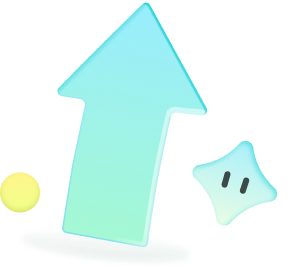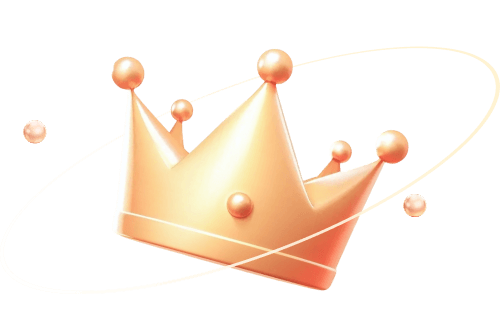Adolescent circadian phase shifts: novel time-of-day targets for bright light
青少年昼夜节律相移:新的亮光时间目标
基本信息
- 批准号:10684645
- 负责人:
- 金额:$ 50.2万
- 依托单位:
- 依托单位国家:美国
- 项目类别:
- 财政年份:2020
- 资助国家:美国
- 起止时间:2020-08-01 至 2025-06-30
- 项目状态:未结题
- 来源:
- 关键词:AdolescenceAdolescentAdultAlcohol consumptionAnxietyBiologicalChronicCircadian RhythmsCircadian desynchronyConflict (Psychology)Control GroupsCuesDarknessDataDepressed moodDevelopmentDrowsinessFeeling suicidalFutureGoalsHomeHumanIndividualInsulin ResistanceLaboratoriesLightMammalsMeasuresMelatoninObesityOutcomeOverweightParticipantPerformancePhasePhase response curvesPhototherapyProtocols documentationPsychosocial FactorPubertyPublishingRandomizedRecommendationRiskRisk BehaviorsScheduleSchoolsSleepSleep DeprivationSunlightSystemTeenagersTestingTimeWorkagedawakecircadiancircadian pacemakerconduct problemdesignemotion regulationexperiencefallsfollow-upnovelpermissivenessresponsesleep onsetsubstance use
项目摘要
PROJECT SUMMARY
A majority of older adolescents in the U.S. are chronically sleep deprived, getting 1- 2 h less sleep than
recommended. The circadian (~24-h) system shifts later (delay) with the progression of puberty; this shift
contributes to late sleep onsets in older adolescents. Early school start times force teenagers awake earlier
than their spontaneous wake time. Thus, the opportunity for sleep shortens. Many adolescents are also
waking for school at the “wrong” circadian time. Chronic circadian misalignment and sleep restriction are at
their peak during late adolescence, and are associated with morning daytime sleepiness, poor academic
performance, conduct problems, depressed mood, suicidal ideation, substance use, insulin resistance, and
obesity. Bright light exposure from light boxes can shift rhythms earlier (phase advance) to facilitate earlier
sleep onset, and reduce morning circadian misalignment and the associated risks. We constructed the first
phase response curves (PRCs) to bright light in older adolescents. To phase advance circadian rhythms, our
PRCs showed that the ideal time to begin light exposure was slightly before wake-up time and light should be
avoided around bedtime because this is when light produces maximum phase delay shifts. An unexpected
finding from our results, however, was a second advancing region in the afternoon (~6 to 9 h after habitual
wake-up time) suggesting that afternoon light may have more circadian phase advancing ability than
traditionally thought. The overall goal of this mechanistic study is to follow-up on our unexpected PRC findings
and test whether individually-timed afternoon light alone and in combination with morning bright light can shift
circadian rhythms earlier in older adolescents aged 14 to 17 years. Four groups will be compared in a
randomized parallel group design: afternoon bright light, morning bright light, morning + afternoon bright light,
and a dim room light control. Adolescents will complete a 2-week protocol. After a baseline week with a stable
sleep schedule, adolescents will live in our laboratory for 4 days. Sleep/dark and the time of bright light
exposure will gradually shift earlier. Bright light (~5000 lux) will be timed individually based on his/her stable
baseline sleep schedule. The first 3-h morning bright light exposure will begin 1 h before wake on the first
morning. The first 3-h afternoon bright light exposure will begin 6 h after wake. The morning + afternoon
exposures will begin at the same times, but each exposure will be 1.5 h so that a total of 3 h of bright light per
day will be given to each group except the dim light control group. Phase shifts of the circadian clocks marked
by the dim light melatonin onset (DLMO) is the main outcome. We hypothesize that afternoon bright light will
advance DLMO more than dim room light and afternoon bright light will work synergistically with morning bright
light to produce larger shifts than morning or afternoon bright light alone. If our hypotheses are supported,
these data will challenge the current understanding of how to use bright light to shift the circadian system
earlier.
项目总结
美国大多数年龄较大的青少年长期睡眠不足,睡眠时间比
推荐的。昼夜节律(~24小时)系统随着青春期的进展而推迟(延迟);这种转变
导致年龄较大的青少年入睡过晚。早起上课时间迫使青少年提早醒来
而不是他们的自发唤醒时间。因此,睡眠的机会缩短了。许多青少年也是
在“错误的”生物钟时间醒来去上学。慢性昼夜节律失调和睡眠受限
他们的高峰期在青春期晚期,并与早上白天嗜睡,学习成绩差有关
表现,行为问题,抑郁情绪,自杀念头,药物使用,胰岛素抵抗,以及
肥胖。来自灯箱的强光照射可以提前改变节律(相位提前),以利于更早
睡眠开始,并减少早晨的昼夜节律失调和相关风险。我们建造了第一座
年龄较大的青少年对强光的相反应曲线。为了推进昼夜节律,我们的
PRCS显示,开始曝光的理想时间是在醒来时间之前的轻微时间,光线应该是
避免在睡前,因为这是光线产生最大相位延迟移位的时候。意想不到的
然而,从我们的结果中发现,第二个推进区在下午(习惯性后约6至9小时)
唤醒时间),这表明下午的光线可能比
传统上认为。这项机械研究的总体目标是跟进我们在中华人民共和国的意外发现。
并测试单独计时的午后光线和与早上的强光结合是否可以转换
14至17岁年龄较大的青少年较早出现昼夜节律。四个小组将在一年中进行比较
随机平行分组设计:下午明灯,早上明灯,早上+下午明灯,
和一个昏暗的房间灯光控制。青少年将完成为期两周的方案。在经历了一个稳定的基线周后
睡眠时间表,青少年将在我们的实验室住4天。睡眠/黑暗和明亮的时间
风险敞口将在更早的时候逐渐转移。强光(~5000勒克斯)将根据他/她的稳定情况单独计时
基线睡眠时间表。第一次3小时的清晨强光照射将在第一次醒来前1小时开始。
早上。第一次3小时的午后强光照射将在觉醒后6小时开始。上午+下午
曝光将在相同的时间开始,但每次曝光将为1.5小时,因此每次曝光总共3小时的亮光
除暗光对照组外,每组都将有一天。昼夜节律钟表的相移
在昏暗的光线下,褪黑素起病(DLMO)是主要结局。我们假设下午会有明亮的光线
超前的DLMO比昏暗的房间光和下午的明亮光更能与早晨的明亮协同工作
光产生比上午或下午单独明亮的光更大的移位。如果我们的假设得到支持,
这些数据将挑战目前人们对如何利用强光改变昼夜节律系统的理解
早些时候。
项目成果
期刊论文数量(0)
专著数量(0)
科研奖励数量(0)
会议论文数量(0)
专利数量(0)
数据更新时间:{{ journalArticles.updateTime }}
{{
item.title }}
{{ item.translation_title }}
- DOI:
{{ item.doi }} - 发表时间:
{{ item.publish_year }} - 期刊:
- 影响因子:{{ item.factor }}
- 作者:
{{ item.authors }} - 通讯作者:
{{ item.author }}
数据更新时间:{{ journalArticles.updateTime }}
{{ item.title }}
- 作者:
{{ item.author }}
数据更新时间:{{ monograph.updateTime }}
{{ item.title }}
- 作者:
{{ item.author }}
数据更新时间:{{ sciAawards.updateTime }}
{{ item.title }}
- 作者:
{{ item.author }}
数据更新时间:{{ conferencePapers.updateTime }}
{{ item.title }}
- 作者:
{{ item.author }}
数据更新时间:{{ patent.updateTime }}
Stephanie Crowley McWilliam其他文献
Stephanie Crowley McWilliam的其他文献
{{
item.title }}
{{ item.translation_title }}
- DOI:
{{ item.doi }} - 发表时间:
{{ item.publish_year }} - 期刊:
- 影响因子:{{ item.factor }}
- 作者:
{{ item.authors }} - 通讯作者:
{{ item.author }}
{{ truncateString('Stephanie Crowley McWilliam', 18)}}的其他基金
Adolescent circadian phase shifts: novel time-of-day targets for bright light
青少年昼夜节律相移:新的亮光时间目标
- 批准号:
10224325 - 财政年份:2020
- 资助金额:
$ 50.2万 - 项目类别:
Adolescent circadian phase shifts: novel time-of-day targets for bright light
青少年昼夜节律相移:新的亮光时间目标
- 批准号:
10438723 - 财政年份:2020
- 资助金额:
$ 50.2万 - 项目类别:
Adolescent circadian misalignment: Mechanistic studies of sleep and light
青少年昼夜节律失调:睡眠和光的机制研究
- 批准号:
10582532 - 财政年份:2020
- 资助金额:
$ 50.2万 - 项目类别:
Adolescent circadian misalignment: Mechanistic studies of sleep and light
青少年昼夜节律失调:睡眠和光的机制研究
- 批准号:
10368967 - 财政年份:2020
- 资助金额:
$ 50.2万 - 项目类别:
Teen School-Night Sleep Extension: An Intervention Targeting the Circadian System
青少年学校晚上的睡眠延长:针对昼夜节律系统的干预措施
- 批准号:
8759958 - 财政年份:2014
- 资助金额:
$ 50.2万 - 项目类别:
Teen School-Night Sleep Extension: An Intervention Targeting the Circadian System
青少年学校晚上的睡眠延长:针对昼夜节律系统的干预措施
- 批准号:
9121605 - 财政年份:2014
- 资助金额:
$ 50.2万 - 项目类别:
Teen School-Night Sleep Extension: An Intervention Targeting the Circadian System
青少年学校晚上的睡眠延长:针对昼夜节律系统的干预措施
- 批准号:
9521933 - 财政年份:2014
- 资助金额:
$ 50.2万 - 项目类别:
Teen School-Night Sleep Extension: An Intervention Targeting the Circadian System
青少年学校晚上的睡眠延长:针对昼夜节律系统的干预措施
- 批准号:
8919441 - 财政年份:2014
- 资助金额:
$ 50.2万 - 项目类别:
Adolescent sleep delay: circadian regulation and phase shifting with light
青少年睡眠延迟:昼夜节律调节和光相移
- 批准号:
8457087 - 财政年份:2012
- 资助金额:
$ 50.2万 - 项目类别:
Adolescent sleep delay: circadian regulation and phase shifting with light
青少年睡眠延迟:昼夜节律调节和光相移
- 批准号:
8824960 - 财政年份:2012
- 资助金额:
$ 50.2万 - 项目类别:
相似海外基金
Usefulness of a question prompt sheet for onco-fertility in adolescent and young adult patients under 25 years old.
问题提示表对于 25 岁以下青少年和年轻成年患者的肿瘤生育力的有用性。
- 批准号:
23K09542 - 财政年份:2023
- 资助金额:
$ 50.2万 - 项目类别:
Grant-in-Aid for Scientific Research (C)
The impact of changes in social determinants of health on adolescent and young adult mental health during the COVID-19 pandemic: A longitudinal study of the Asenze cohort in South Africa
COVID-19 大流行期间健康社会决定因素的变化对青少年和年轻人心理健康的影响:南非 Asenze 队列的纵向研究
- 批准号:
10755168 - 财政年份:2023
- 资助金额:
$ 50.2万 - 项目类别:
A Priority Setting Partnership to Establish a Patient, Caregiver, and Clinician-identified Research Agenda for Adolescent and Young Adult Cancer in Canada
建立优先合作伙伴关系,以建立患者、护理人员和临床医生确定的加拿大青少年和年轻人癌症研究议程
- 批准号:
480840 - 财政年份:2023
- 资助金额:
$ 50.2万 - 项目类别:
Miscellaneous Programs
Incidence and Time on Onset of Cardiovascular Risk Factors and Cardiovascular Disease in Adult Survivors of Adolescent and Young Adult Cancer and Association with Exercise
青少年和青年癌症成年幸存者心血管危险因素和心血管疾病的发病率和时间以及与运动的关系
- 批准号:
10678157 - 财政年份:2023
- 资助金额:
$ 50.2万 - 项目类别:
Fertility experiences among ethnically diverse adolescent and young adult cancer survivors: A population-based study
不同种族青少年和年轻成年癌症幸存者的生育经历:一项基于人群的研究
- 批准号:
10744412 - 财政年份:2023
- 资助金额:
$ 50.2万 - 项目类别:
Treatment development for refractory leukemia using childhood/adolescent, and young adult leukemia biobank
利用儿童/青少年和青年白血病生物库开发难治性白血病的治疗方法
- 批准号:
23K07305 - 财政年份:2023
- 资助金额:
$ 50.2万 - 项目类别:
Grant-in-Aid for Scientific Research (C)
Molecular design of Two-Way Player CAR-T cells to overcome disease/antigen heterogeneity of childhood, adolescent, and young adult cancers
双向 CAR-T 细胞的分子设计,以克服儿童、青少年和年轻成人癌症的疾病/抗原异质性
- 批准号:
23H02874 - 财政年份:2023
- 资助金额:
$ 50.2万 - 项目类别:
Grant-in-Aid for Scientific Research (B)
Effects of adolescent social isolation on adult decision making and corticostriatal circuitry
青少年社会隔离对成人决策和皮质纹状体回路的影响
- 批准号:
10756652 - 财政年份:2023
- 资助金额:
$ 50.2万 - 项目类别:
Adolescent trauma produces enduring disruptions in sleep architecture that lead to increased risk for adult mental illness
青少年创伤会对睡眠结构产生持久的破坏,从而导致成人精神疾病的风险增加
- 批准号:
10730872 - 财政年份:2023
- 资助金额:
$ 50.2万 - 项目类别:
Using Tailored mHealth Strategies to Promote Weight Management among Adolescent and Young Adult Cancer Survivors
使用量身定制的移动健康策略促进青少年和年轻癌症幸存者的体重管理
- 批准号:
10650648 - 财政年份:2023
- 资助金额:
$ 50.2万 - 项目类别:

















 {{item.name}}会员
{{item.name}}会员




